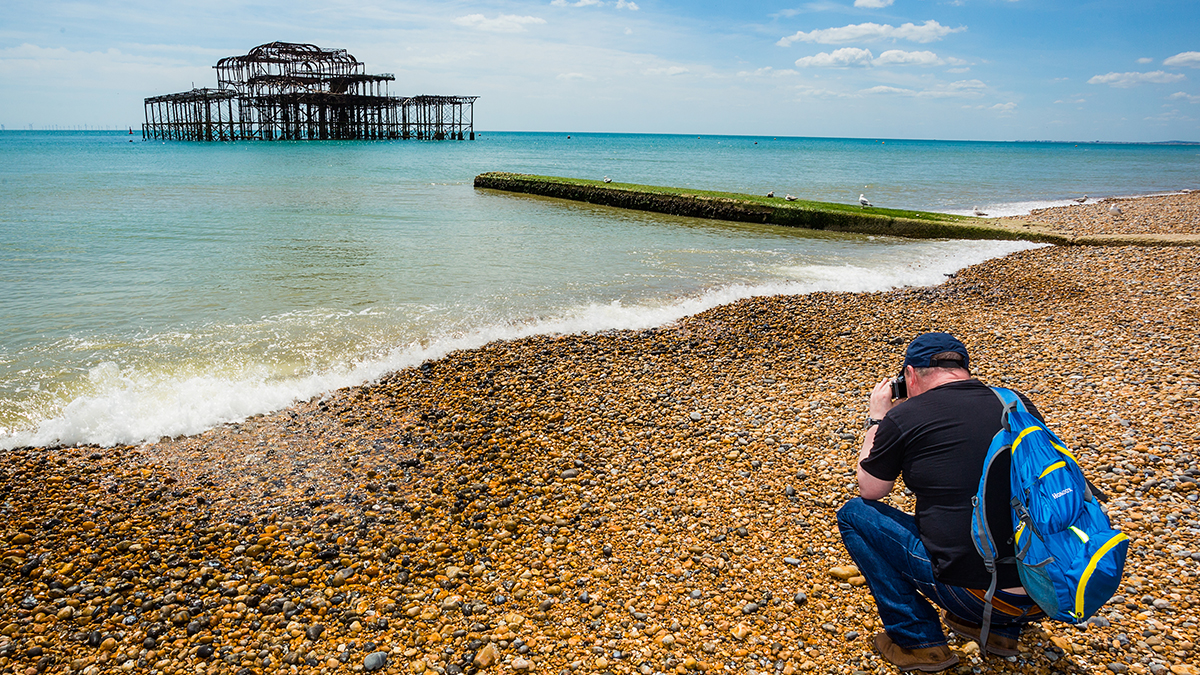
One lucky reader recently joined Digital Camera editor Ben Brain down in Brighton for a fun photo challenge. He was set a number of tasks and loaned an Olympus OM-D E-M10 Mark III and a number of lenses by London Camera Exchange. So how did he get on?
The reader: Alain Landes
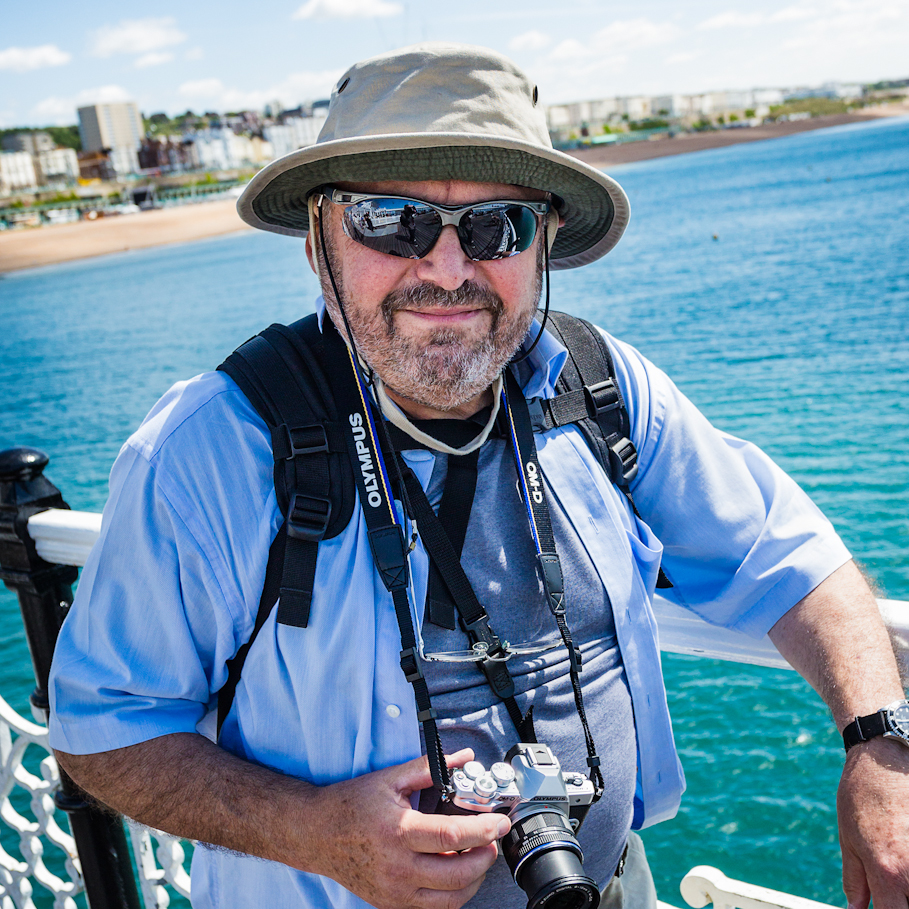
Alain, a customer of the Strand branch of London Camera Exchange, is a retired NHS anaesthetist, who started photography in the late 1970s with a Canonet fixed-lens compact. He quickly progressed to a Canon SLR and just one lens (an 85mm prime), joined the Royal Photographic Society and soon after got his LRPS. 100-hour weeks for eight years, followed by a family, took care of most of his spare time, but retirement allowed him to reactivate his passion for photography. A bad back saw Alain opting to save size and weight by trading in his Canon cameras for an Olympus mirrorless system.
Challenge 1 - Capture a snapshot of life on Brighton Pier
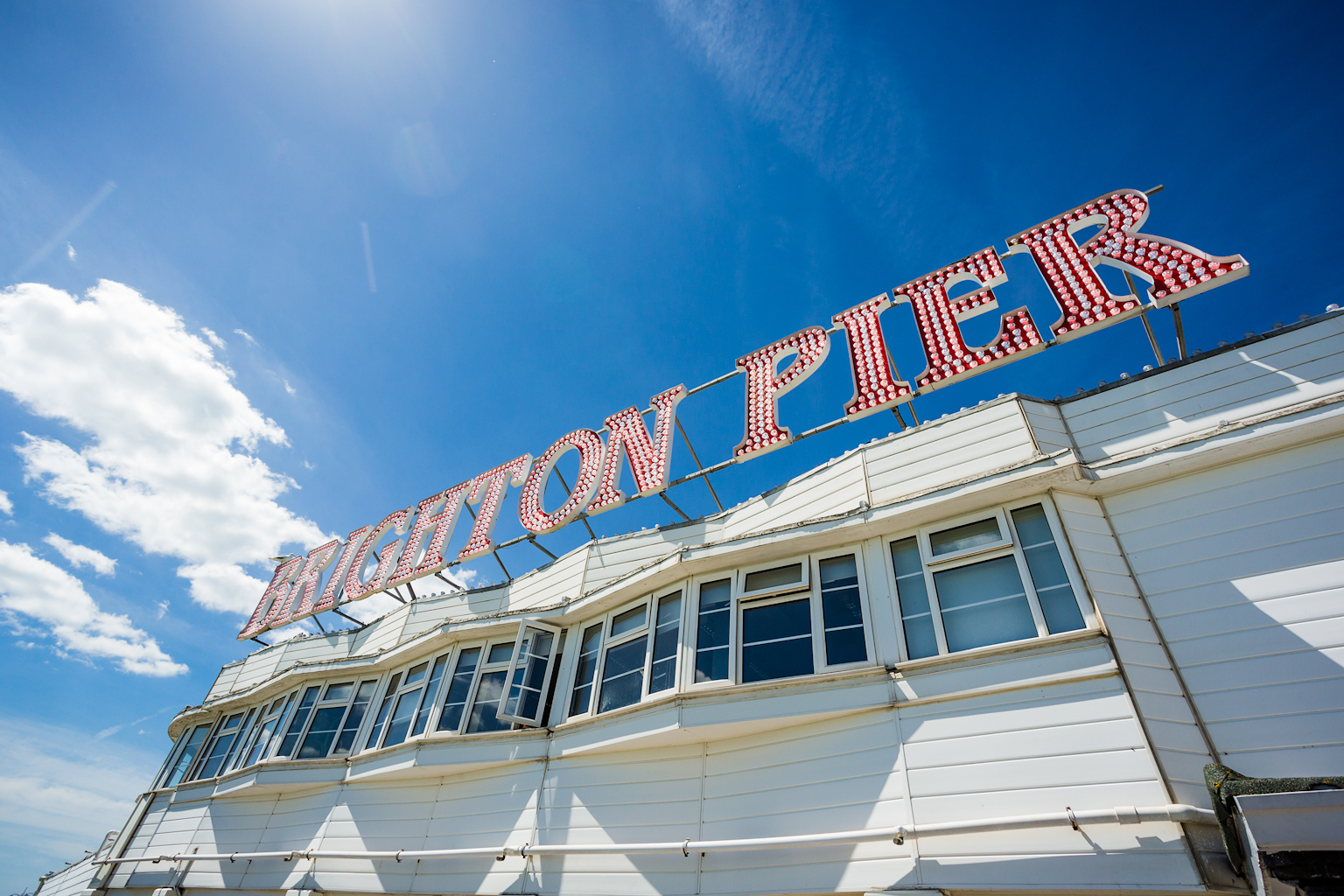
While standard and wide zooms are perfect for street photography on the beach, a long lens makes it easier to pick out minimalist shots and leaner landscape compositions. Find a sheltered spot to change lenses if it’s breezy, as you risk debris being dumped on the sensor, and keep your kit shielded from the sun and salt spray in a backpack.
We kicked off the day with a roasting stroll on Brighton Pier, on the hunt for characterful candids and colourful abstracts. “It was a challenge to use an unfamiliar camera with a wide-angle zoom for the first time, but the glorious weather helped,” explains Alain. “It meant that I was able to keep the aperture at around f/8 and use the base ISO of 200. The advantage of using a wide-angle lens is that although you have to get quite close, the subject is not really aware of you as you are not generally pointing the camera directly at them. I never actually looked at my subject here, and was very quick to take the shot.
“With such a wide lens, it can be difficult to keep the camera level, and it is easy to lose control of the verticals and horizontals. Correcting them in processing can mean sacrificing a lot of the composition, so it’s best to get it right in-camera. And I do like the composition of this shot. The heavy shadow made the exposure quite tricky, and I had to lose some of the highlights to keep detail in the figure, but at least this helped to isolate him. The cracking paintwork on the wood hints at the faded past glory of the pier, and the man himself seems to have quite a back story.”
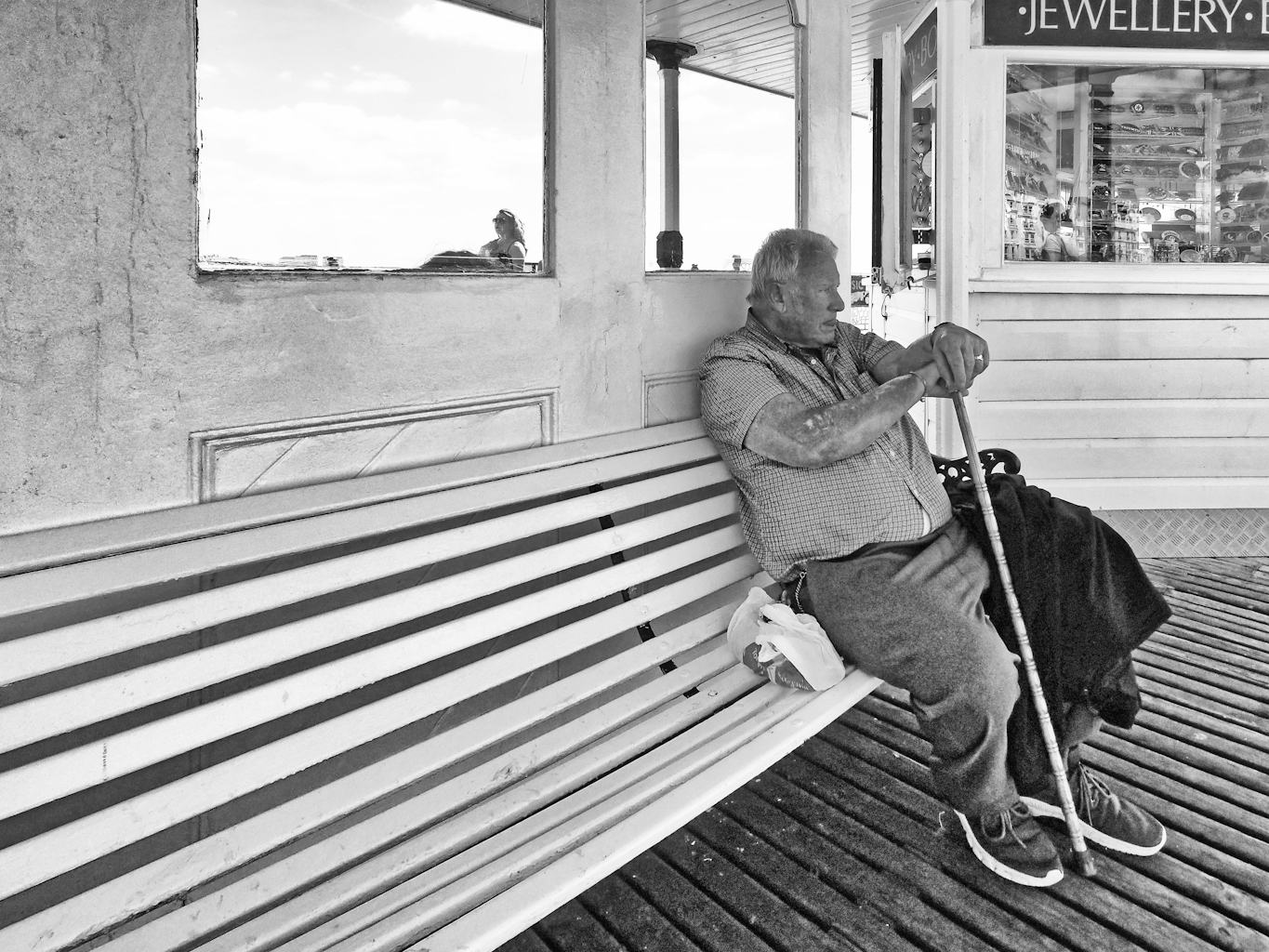
Expert opinion
A cracking use of leading lines to direct the eye towards the subject. Keeping him close to the edge, looking out of shot, conveys a feeling of isolation.
Challenge 2: Shoot a graphical shot on the beach
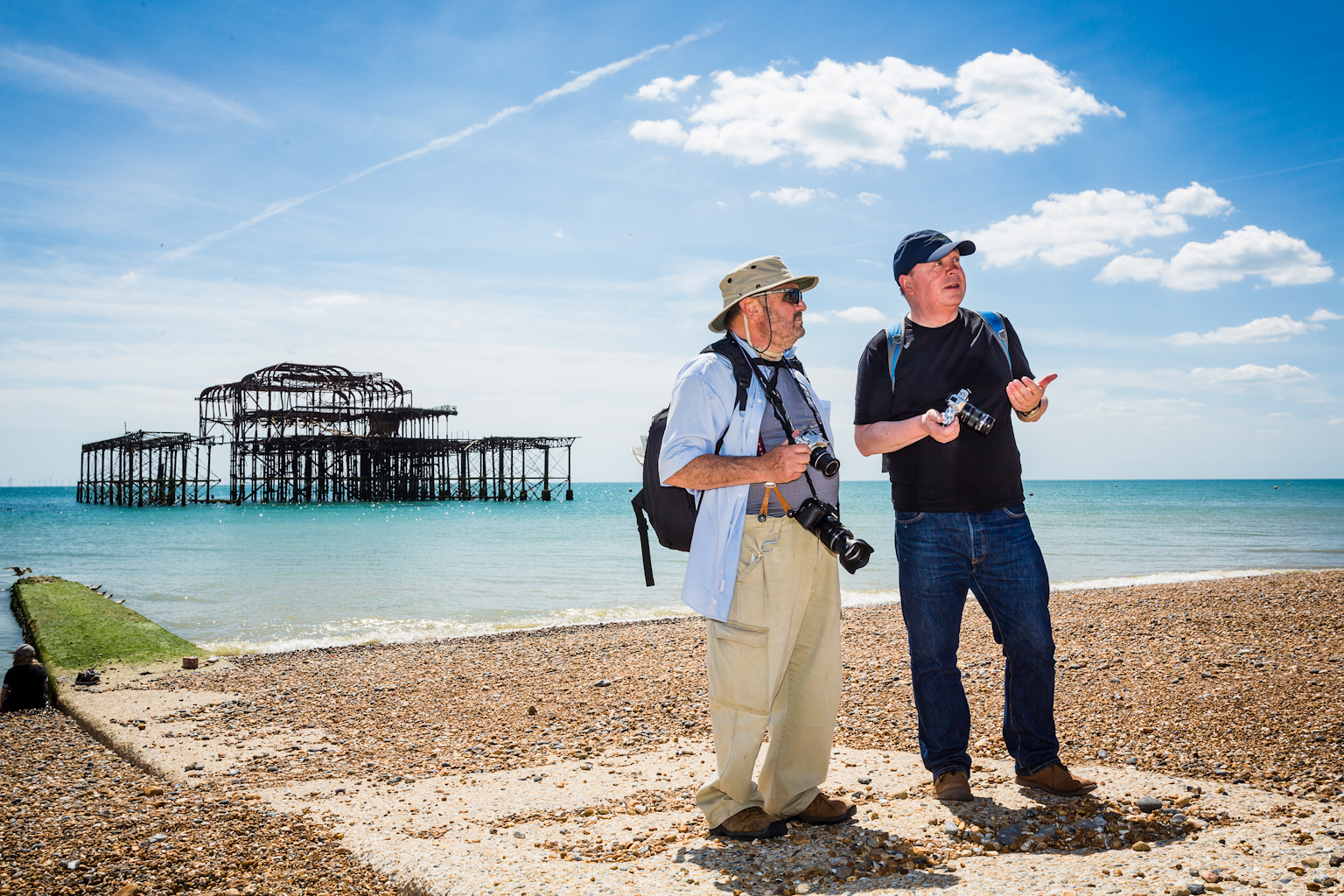
After a couple of hours working the pier, it was time to explore the beach.
Get the Digital Camera World Newsletter
The best camera deals, reviews, product advice, and unmissable photography news, direct to your inbox!
To increase the challenge, Alain was loaned an Olympus OM-D E-M10 Mark III, plus lenses each for the day. Its small form factor lends itself to street photography, as you’re less likely to draw attention to yourself. Fitting a wide-angle lens and pre-focusing enables you to approach closely for intimate results.
The stark light and shade generated by the combination of clear blue skies and midday light didn’t lend itself to classic landscape photography, but Brighton has plenty of other seaside nuggets to focus on – including the British Airways i360. This observation tower takes passengers to a height of 450 feet (20 feet higher than the London Eye) – but it’s the view of the pod itself that caught Alain’s eye.
“I originally wanted to shoot straight up from the base of the tower with the wide-angle lens, but was prevented from getting there,” he says. “So I opted to stand at a distance and shoot with a longer focal length to emphasise the details of the cabin before it got too high.
“My plan was to get a frame-filling shot showing the size of the capsule relative to the people in it, but also include the landscape underneath in the multi-layered reflections. The capsule moves quite slowly, and with the abundance of sunshine I plumped for an exposure of 1/500 sec at f/8, ISO 200.
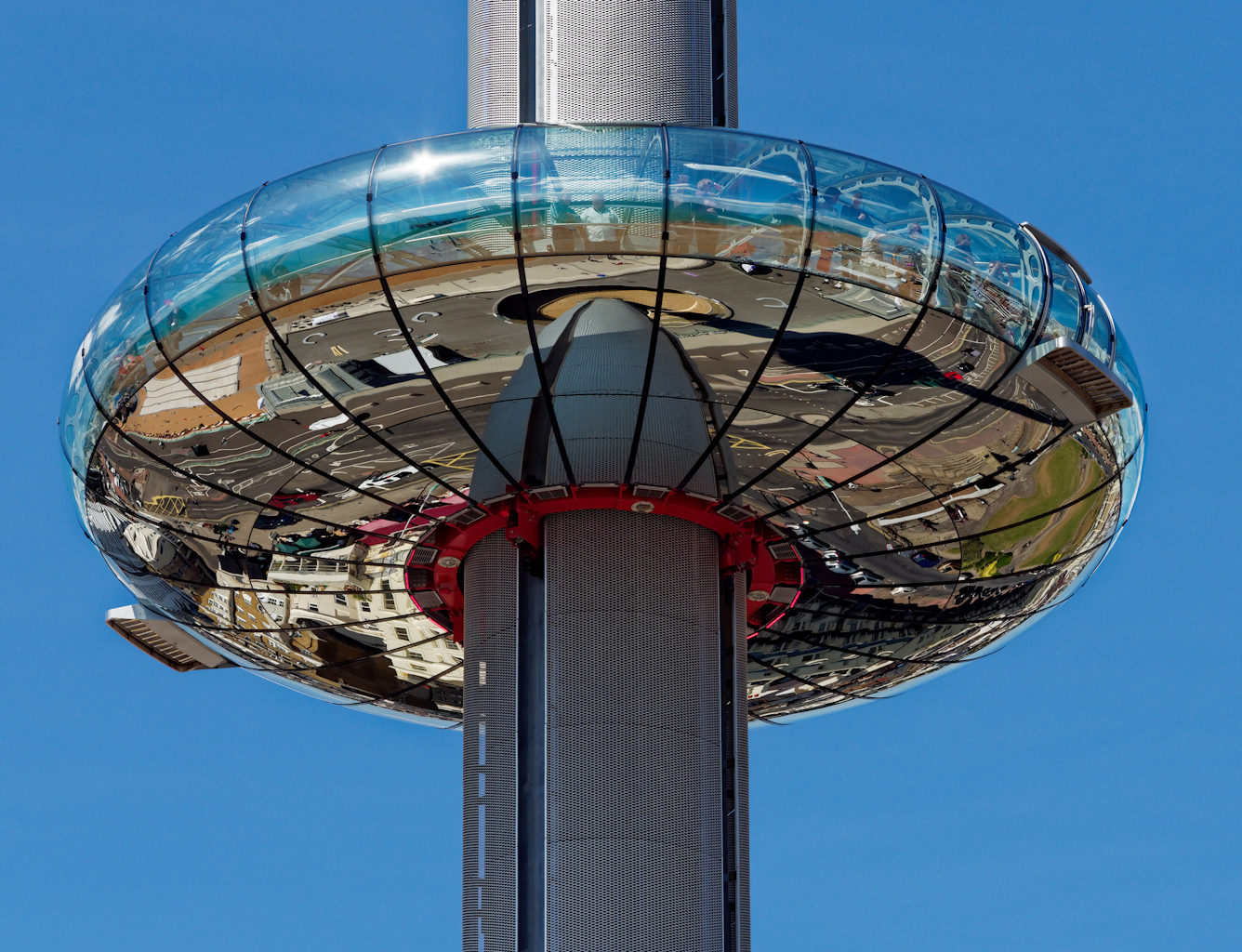
Expert opinion
Alain’s shot has an impressive level of clarity, with bags of detail to pick out in all the panels and an almost three-dimensional feel. The graphical, almost abstract feel of the geometric shapes against the solid blue sky contrasts with the human interest of the observers.
Challenge 3: Show us your eye for interesting urban details
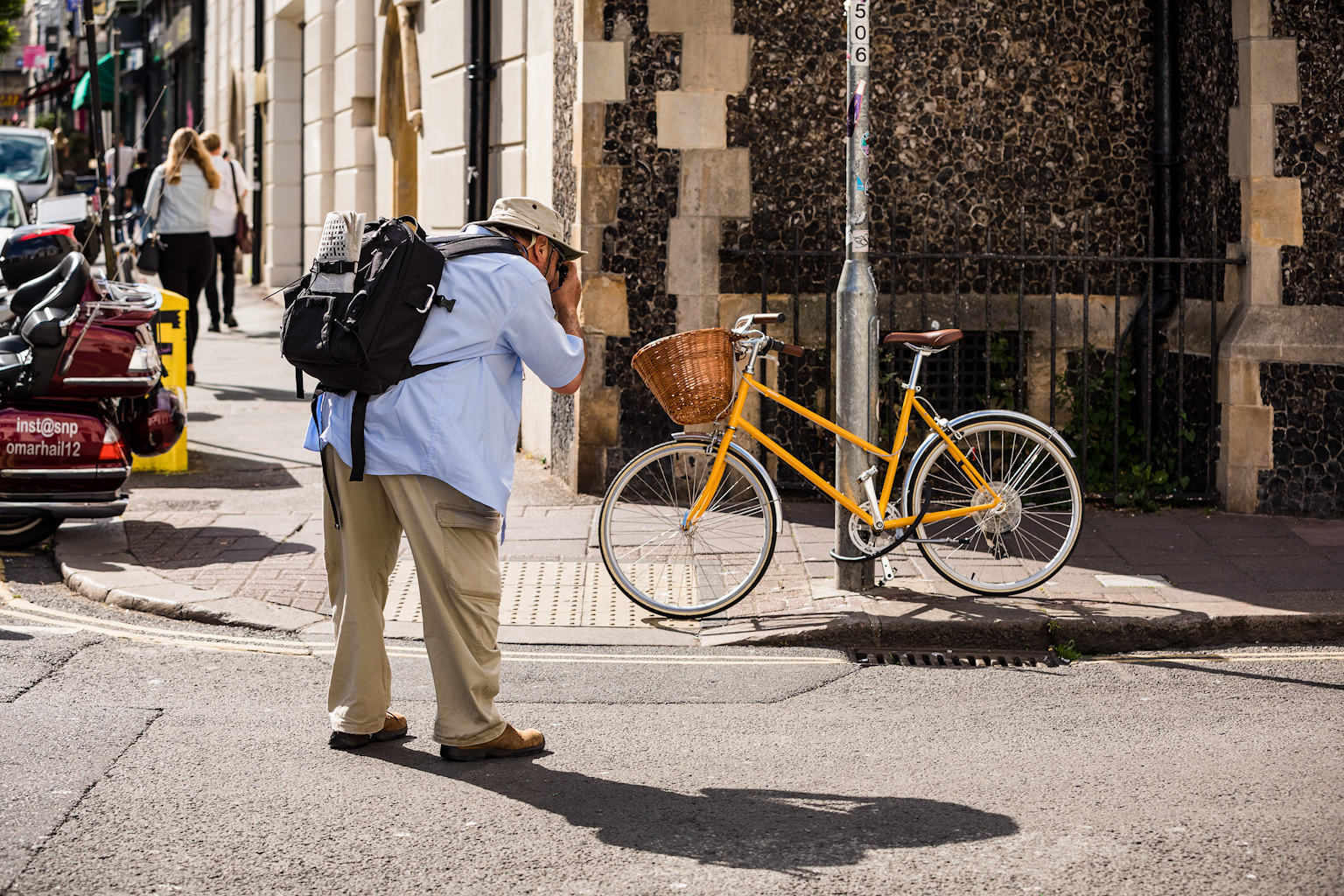
After a quick break to refuel and cool off, we headed inland to explore the urban side of Brighton.
There are two main approaches to street photography: find a promising location and wait for someone to walk into it, or actively look for a promising subject and follow them until they walk into an interesting location. Be adaptable too – as Alain has shown with his bike shot, it pays to seize the moment, even if it is a type of picture that you didn’t have on your radar.
Alain and Ben headed to the Lanes, an area famous for its narrow alleyways and boutique shops. It’s easy to find yourself aimlessly wandering districts like this with no real agenda – and sometimes that can result in unexpected pictures – but we were on a fairly tight schedule. With that in mind, we quickly identified a couple of hotspots – a busy corner crossing, a wall covered in graffiti – where we paused in the hope of things developing. That’s when Alain spotted this bicycle.
“The Lanes reminds me of the old-fashioned Brighton, in which the bike remains the best mode of transport,” says Alain. “The idea of the black-and-white conversion preserving the single colour of the bicycle frame is not original, but I believe it works well here because the background brings little to the composition, and the angled light produces interesting highlights in the chrome and a strong shadow. That vivid yellow colour is the icing on the cake, as it is rather rare on bikes.”
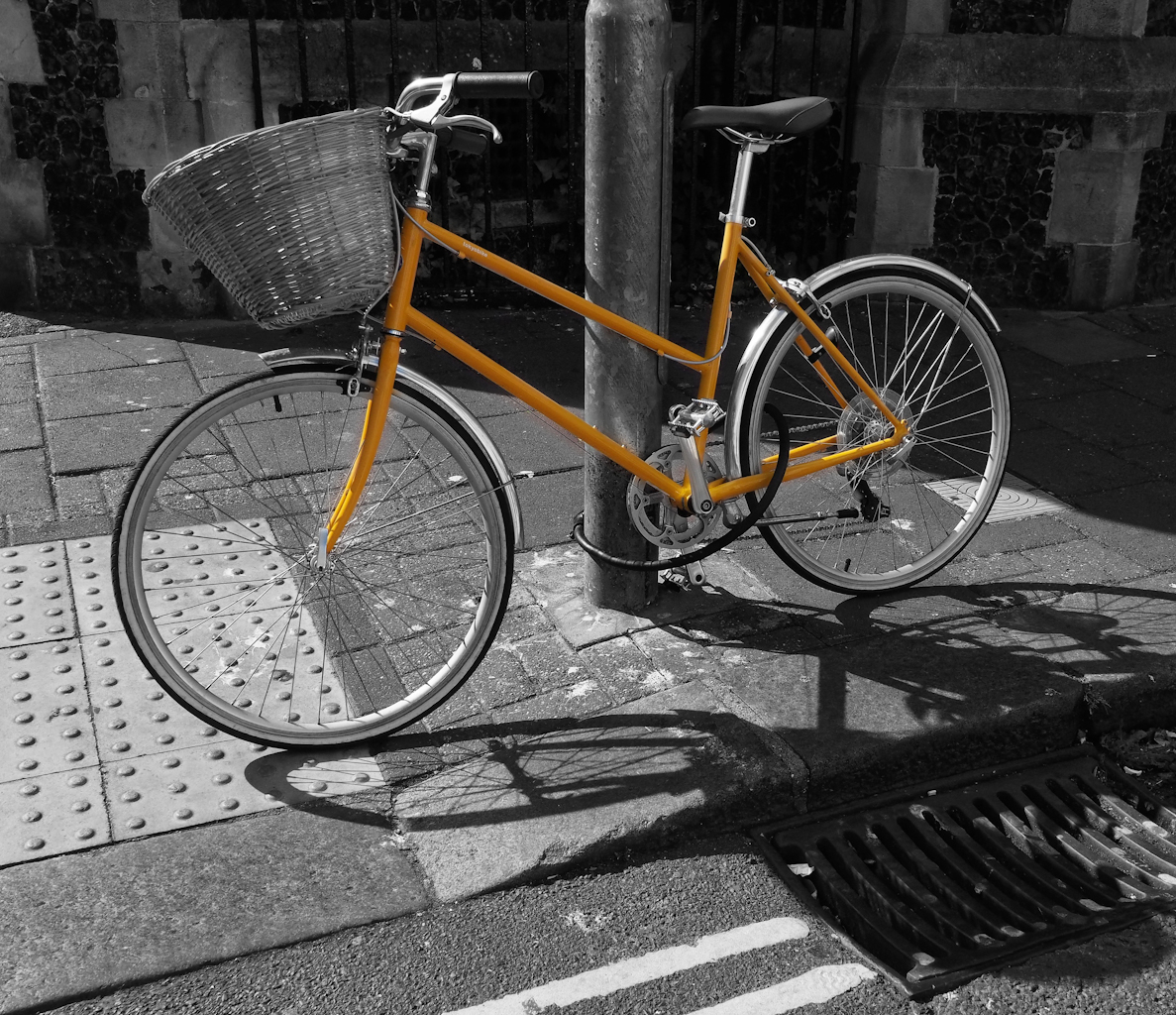
Expert opinion
Alain’s right: spot colour is a technique that’s as old as the hills, but here the arresting combination of yellow, black and white works well. In a standard full-colour treatment, the bike would have been lost in the warm light and yellowed paving. The monochrome treatment also removes potential background distractions in the shadowed area.
About London Camera Exchange
London Camera Exchange has 30 branches across the country, from Plymouth in the South West to Newcastle in the North East, and has been in existence since 1956. Each store is staffed by knowledgeable and enthusiastic people. As well as selling all the latest photographic and optical equipment, LCE specialises in part-exchange; its extensive second-hand stock is available from its website. Services like sensor cleaning video transfers and printing are available in-store, and the branches hold various events and shows throughout the year, with all information available at London Camera Exchange.
Digital Camera World is one of the leading authorities on camera and photography news, reviews, techniques, tutorials, comparisons, deals and industry analysis. The site doesn't just specialize in cameras, but all aspects of photography, videography and imaging – including camera phones, gimbals, lenses, lighting, editing software, filters, tripods, laptops, printers, photo books, desks, binoculars and more.
Whether you're using, looking to buy or trying to get the most out of a compact camera, action camera, camera drone, cinema camera, beginner camera or professional camera, Digital Camera World has a roster of experts with combined experience of over 100 years when it comes to cameras, photography and imaging.

